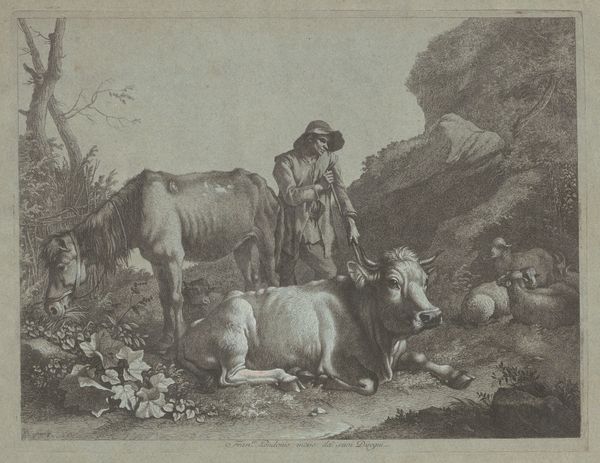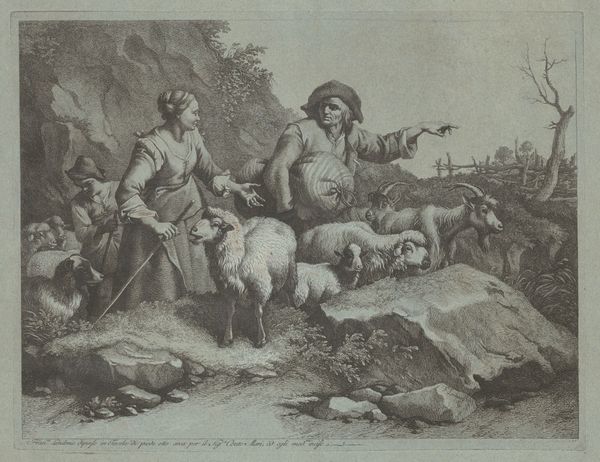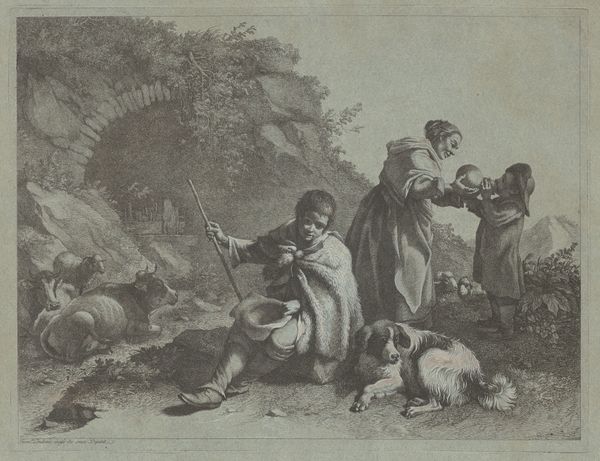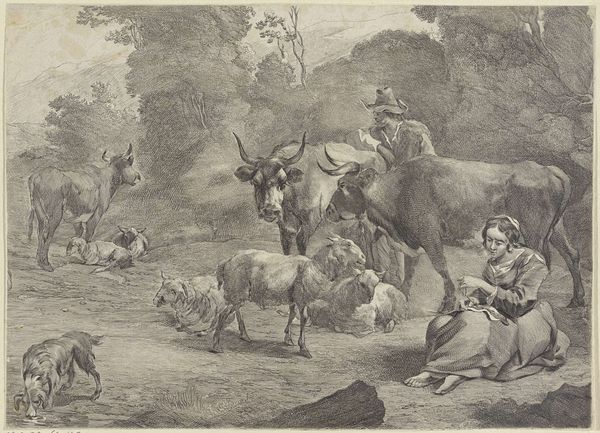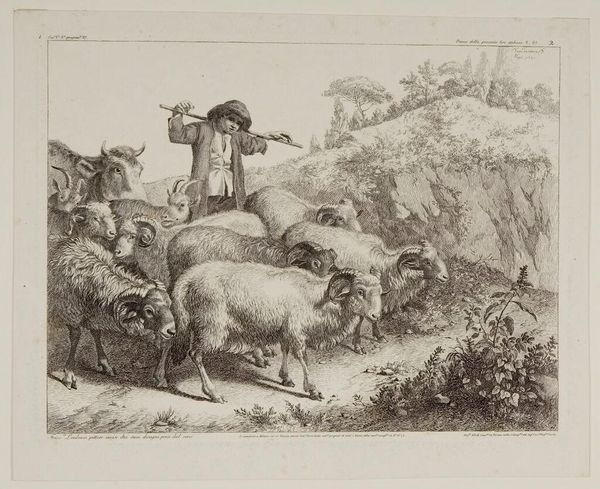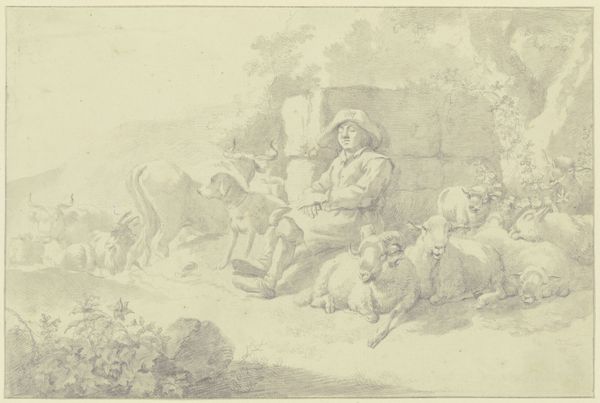
# print
#
pencil sketch
#
charcoal drawing
#
possibly oil pastel
#
charcoal art
#
oil painting
#
acrylic on canvas
#
underpainting
#
watercolour illustration
#
charcoal
#
watercolor
Dimensions: plate: 21.8 x 28.9 cm (8 9/16 x 11 3/8 in.) sheet: 28.5 x 41 cm (11 1/4 x 16 1/8 in.)
Copyright: National Gallery of Art: CC0 1.0
Curator: Here we have Francesco Londonio’s 1763 print, "Shepherd with a Sack Driving a Flock." A pastoral scene, of course, with a shepherd guiding his sheep to water. What strikes you first? Editor: Immediately, I'm noticing the paper itself and the incredible detail achieved through the printmaking process. It gives the entire composition a gentle, almost dreamy texture. Look at how the sheep seem to blur slightly at the edges. What sort of social structure was this capturing, if anything? Curator: Shepherd and flock are recurrent motifs within religious allegory, reaching back into ancient near eastern imagery of kingship, the shepherd’s crook indicating governance but also pastoral care, as in Psalm 23 "The Lord is my Shepherd.” Editor: I hadn't thought of the biblical symbolism so overt here. To me, though, it’s speaking volumes about the rural economy of the time. How commonplace would an image like this have been and the working conditions? Was this the luxury market for prints? Or mass production to communicate value and wealth, by way of livestock? Curator: The circulation of images would likely have been aimed at those familiar with country life. We can see Londonio wasn’t necessarily celebrating backbreaking toil but appealing to romantic notions already present. Even then, rural life was being idealized for wider audiences. Editor: And let’s not forget the physical act of creating this image. Think of the tools, the skill required to transfer that vision onto a plate. What type of printmaking are we considering? That will explain the nature of labor and potential industry for it. Was it etching? Or engraving? These factors help us unpack more material context. Curator: It invites contemplation beyond a simple surface impression. This image serves not just as a pretty picture but as a carrier of complex, even ancient ideas. The shepherd is not simply minding sheep but embodying principles of governance, perhaps the idealised responsibilities that wealth ought to shoulder within its community. Editor: Well, on my end, it prompts a fascination with production: the way images participate in circulating commodities in culture and how they come to solidify our views about class and wealth. It’s a quiet pastoral scene, but it certainly asks big questions!
Comments
No comments
Be the first to comment and join the conversation on the ultimate creative platform.


